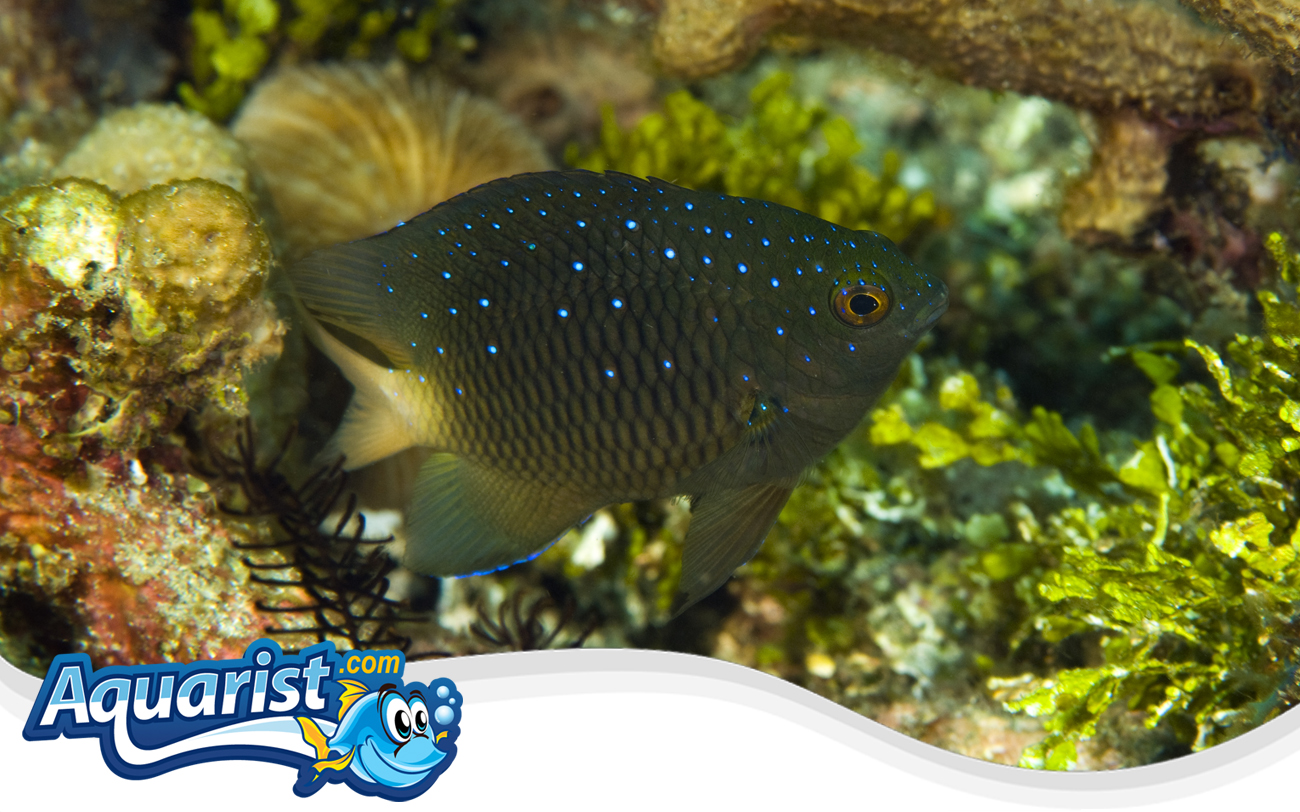Overview
- Found in the Indo-Pacific region, especially around coral reefs, lagoons, and reef flats.
- Displays an iridescent blue body with jewel-like spots, which become more pronounced under reef lighting.
- Territorial and bold, especially as it matures, making it better suited for more experienced aquarists.
- Very hardy and adaptable, making it a good choice for well-planned community or species tanks.
Feeding
- Omnivorous; feeds on algae, plankton, and small invertebrates in the wild.
- Will accept a wide variety of foods, including flakes, pellets, frozen mysis shrimp, and spirulina-based diets.
- Feed 1–2 times daily with a mix of plant and protein-based foods to ensure health and coloration.
- Occasional supplementation with seaweed or algae sheets is beneficial.
Habitat
- Suitable for aquariums of at least 30 gallons, with plenty of live rock for hiding and territory marking.
- Prefers reef environments with stable parameters and moderate water movement.
- Provide caves and rock crevices to reduce stress and territorial aggression.
- Good water quality and routine maintenance are essential for health and behavior.
Fish Care
- Temperature: 74–80°F (23–27°C).
- pH: 8.1–8.4; Specific Gravity: 1.020–1.025.
- Very hardy but may become aggressive if stressed or crowded.
- Routine water changes and observation help maintain long-term health.
Compatibility
- Semi-aggressive; may be territorial toward other damselfish and smaller or passive species.
- Reef-safe; does not typically harm corals or invertebrates.
- Best housed with similarly robust species such as clownfish, dottybacks, and dwarf angelfish.
- Avoid mixing with timid or slow-moving tank mates in small aquariums.
Aquarium Behavior
- Active and territorial, often claiming a section of the tank as its own.
- More aggressive behavior may emerge as the fish matures.
- Will interact with tank mates and caretakers, especially during feeding time.
- Providing visual barriers and hiding spots helps reduce aggression and stress.


